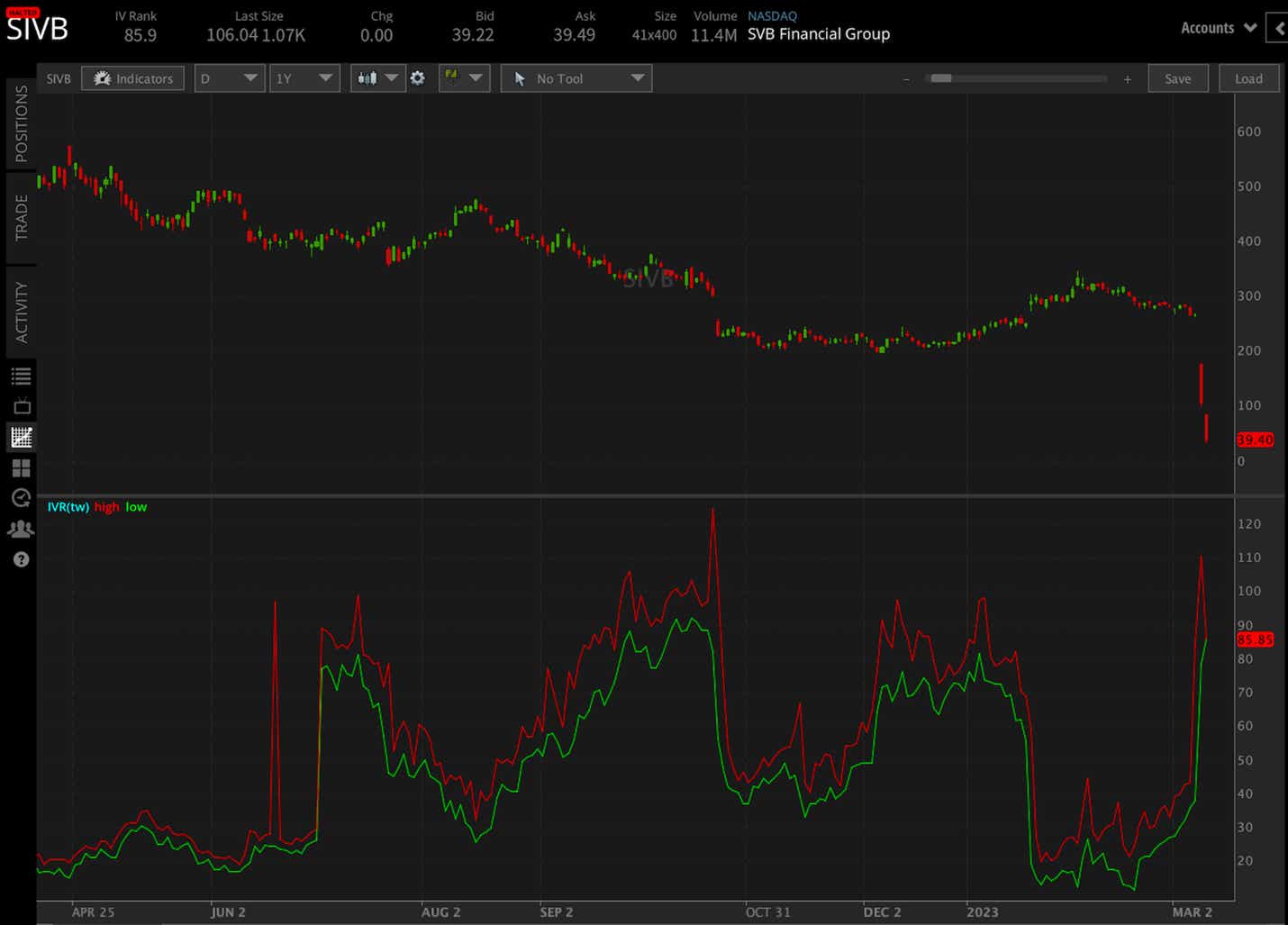Silicon Valley Bank (SIVB) Goes Bust: What it Means for Contagion Risk and the Fed
Silicon Valley Bank (SIVB) Goes Bust: What it Means for Contagion Risk and the Fed
SVB Financial Group, Prominent VC Backer, Goes Bust
Silicon Valley Bank (SIVB) collapsed on Friday, throwing financial markets into chaos and putting the venture capital industry on its heels in a shocking and abrupt development that has left investors and traders scrambling for answers.
A 60% drop in SVB Financial Group’s stock price on Thursday carried over into Friday trading. On Wednesday, the bank announced an issuance of $2.25 billions of common stock as it recorded a $1.8 billion loss surrounding its securities.
Reminiscent of the bank runs of the 1930s, a surge of fear caused FDV’s depositors to withdraw their money in a scramble. In turn, SVB was forced to sell assets at a loss to cover the flood of withdrawals. Like many financial institutions, SVB held a large share of bonds and U.S. Treasuries, which have declined broadly in price over the past several years amid central bank rate hikes.
Technically, per U.S. accounting and regulator rules, firms are not required to mark down bond prices on their books. That typically isn’t a problem, especially if those bonds are held to maturity. This may cause some to rethink those rules or at least examine the risk that falling bond prices over the past several years pose to U.S. institutions.
The evaporating stock price upended a planned capital raise, with the flurry of depositors pulling their money quickly and making it nearly impossible to properly value the company’s balance sheet. While some investors publicly called for depositors to weather the storm, only a few seemed to take that advice.
Savvy investors and those making decisions don’t want to risk the liquidity of their own companies in return for good grace from a bank that likely won’t exist to pay them back. It took over a decade for Salomon Brother’s former depositors to recoup their losses.
Silicon Valley Bank: The First FDIC-Insured Causality of 2023: SVB Explained
Silicon Valley Bank operates in the venture capital space, where it funds a large chunk of technology startups in the United States. The bank was founded in 1983 and is headquartered in Santa Clara, California.
SVB is known for what is considered by some as risky lending, but that is the inherent nature of funding venture capital. It is now the largest bank to go bust since 2008, when the world entered a financial crisis due to housing prices and derivatives products based on mortgages. Currently, FDV’s publicly traded shares are halted, which trade under the ticker SIVB.
Contagion Risk or Contained Risk: What Does This Mean for Markets?
It is unlikely that this collapse will spill over into the broader banking industry, particularly regional banks, which may be sensitive to credit risk, but that is of little consolation for investors. KRW, the SPDR S&P Regional Banking ETF, was down around 5% in the last hour of trading. Investors are rightfully concerned. Banks have been buying bonds heavily over the last few years, meaning some of their assets are underwater currently.
Larger banks, many of which have more sophisticated hedging and risk control parameters in place, are likely going to be okay. But for others, if there are significant liquidity issues, the market should be made aware of those over the coming days and weeks. However, this may cause the Federal Reserve to ease up on interest rate hikes, as they likely want to avoid driving bond prices much lower, something that could increase the risk of contagion.
Investors would welcome a slower pace of rate hikes, and if significant contagion in the banking sector is avoided, the whole snafu could end up guiding markets higher. In any case, this is a good time for traders to be strategic.

Options involve risk and are not suitable for all investors. Please read Characteristics and Risks of Standardized Options before deciding to invest in options.